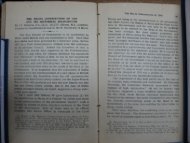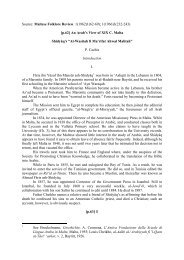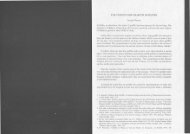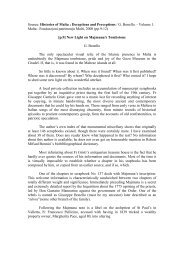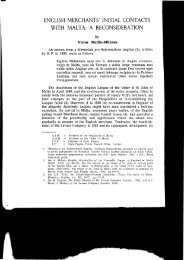essays on de soldanis
essays on de soldanis
essays on de soldanis
Create successful ePaper yourself
Turn your PDF publications into a flip-book with our unique Google optimized e-Paper software.
ESSAYS ON DE SOLDANIS<br />
his grammar with great satisfacti<strong>on</strong> and that he <strong>de</strong>sired to<br />
have him received as Académicien <strong>de</strong>s Belles Lettres. 32<br />
It is not generally known that <strong>de</strong> Soldanis’ literary and<br />
artistic c<strong>on</strong>necti<strong>on</strong>s inclu<strong>de</strong>d a few British pers<strong>on</strong>alities. In the<br />
Preface to his Maltese grammar (1750, p. 67) he stated that in<br />
February of that year he left Malta for Naples with the learned<br />
English traveller Milord Charlem<strong>on</strong>t (‘collo studioso viaggiatore<br />
Inglese Milord Charlem<strong>on</strong>t’). He referred again to Charlem<strong>on</strong>t<br />
when, in 1751, he wrote an Apologia... c<strong>on</strong>tro Michele Acciard who<br />
had plagiarized his account of the C<strong>on</strong>spiracy of the Slaves<br />
mastermin<strong>de</strong>d by Mustapha, Pasha of Rho<strong>de</strong>s in 1749. We read<br />
that the figure of Mustapha shown <strong>on</strong> the copper engraving<br />
in the publicati<strong>on</strong> Mustafà Bassà di Rodi... o sia la di lui C<strong>on</strong>giura<br />
(1751) had been drawn by the painter Favray and that at the<br />
beginning of 1750 it was copied by the English painter D’Alt<strong>on</strong><br />
‘who had ma<strong>de</strong> the tour of the Levant with Milord Charlem<strong>on</strong>t<br />
and others with whom I had the good fortune to travel to<br />
Naples <strong>on</strong> their ship’ [my translati<strong>on</strong>]. 33<br />
A brief note <strong>on</strong> these two will not be amiss here. James<br />
Caulfield, first Earl of Charlem<strong>on</strong>t (1728-1799) was an Irish<br />
statesman who, according to the Dicti<strong>on</strong>ary of Nati<strong>on</strong>al<br />
Biography ‘in 1746 went to the C<strong>on</strong>tinent, residing for a year<br />
in Turin, and afterwards visiting Rome, the Greek islands,<br />
C<strong>on</strong>stantinople, the Levant and Egypt.’ 34<br />
The ‘signor D’Alt<strong>on</strong>’ menti<strong>on</strong>ed in <strong>de</strong> Soldanis’ Apologia<br />
was Richard Dalt<strong>on</strong> (1715?-1791) ‘draughtsman, engraver<br />
and librarian to the King’. He was trained as an artist and<br />
went to Rome to pursue his studies. The relative entry un<strong>de</strong>r<br />
his name in the Dicti<strong>on</strong>ary of Nati<strong>on</strong>al Biography, states that<br />
in 1749 [he] travelled with Roger Kynast<strong>on</strong> and John Fre<strong>de</strong>rick to<br />
Naples, South Italy and Sicily, where they joined a party c<strong>on</strong>sisting<br />
32 Ibid., f. 213r.<br />
33 NLM Libr. 146 ii, f. 350.<br />
34 Dicti<strong>on</strong>ary of Nati<strong>on</strong>al Biography ix (L<strong>on</strong>d<strong>on</strong>, 1887), 326.<br />
16



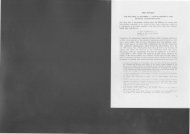




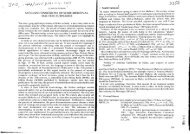
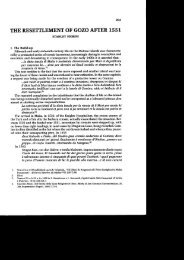
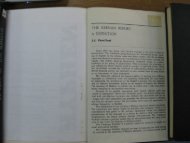

![Source: The Sunday Times [Malta]](https://img.yumpu.com/35239166/1/184x260/source-the-sunday-times-malta.jpg?quality=85)
